Abstract
Studies of the microbial metabolism of benzo[b]thiophene (molecular weight 134) by three Pseudomonas isolates showed the formation of benzothiophene sulfoxide, benzothiophene sulfone, and a sulfur-containing metabolite with a molecular weight of 234. Desulfurization of the high-molecular-weight product with nickel boride gave 1-phenylnaphthalene, indicating that the metabolite was benzo[b]naphtho[1,2-d]thiophene. Similarly, the isolates were capable of producing the analogous dimethyl-substituted benzonaphthothiophenes from methylbenzothiophenes that had the methyl substitution on the benzene ring. The formation of benzo[b] naphtho[1,2-d]thiophene was also observed when a petroleum-degrading mixed culture was incubated with benzothiophene-supplemented Prudhoe Bay crude oil. Investigations into the mechanism of formation of these high-molecular-weight compounds showed that they resulted from an abiotic, Diels-Alder-type condensation of two molecules of the sulfoxide, which were microbially produced from the respective benzothiophene, with the subsequent loss of two atoms of hydrogen and oxygen and one atom of sulfur. The condensation products also formed from the sulfoxides of benzothiophene and methylbenzothiophenes when the sulfoxides were enzymatically synthesized by oxidation of the benzothiophene with horse heart cytochrome c and H2O2.
Full text
PDF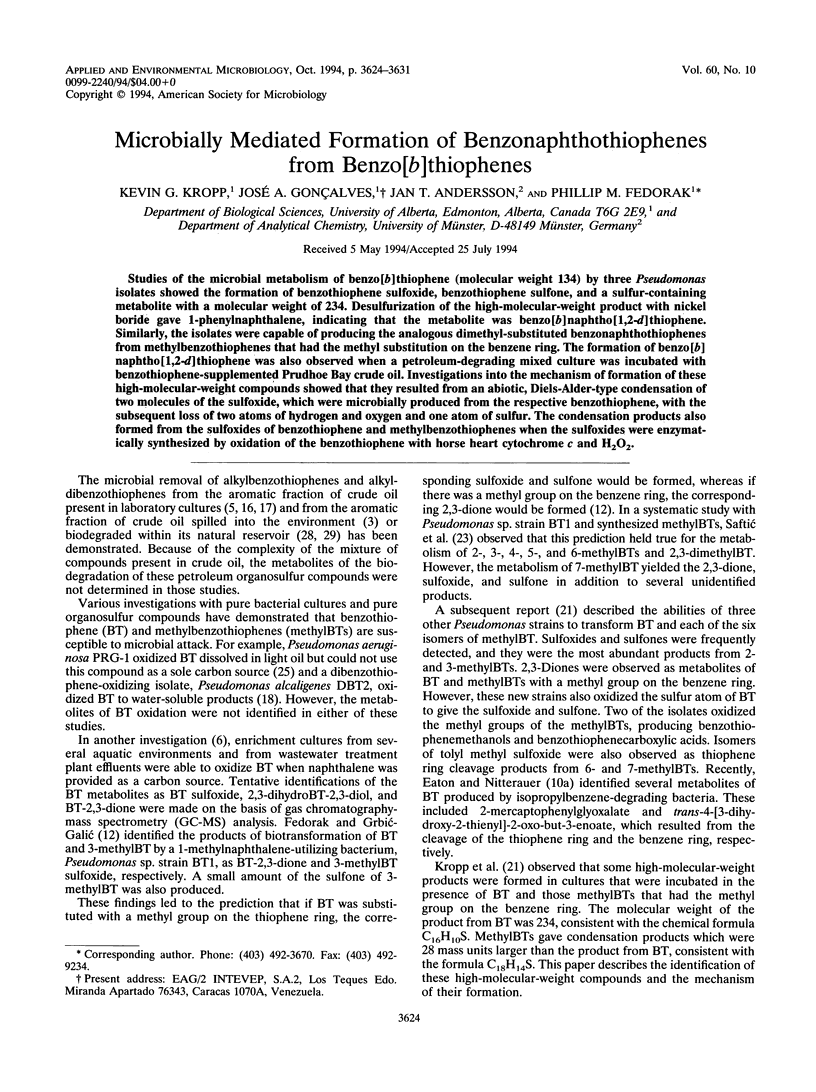


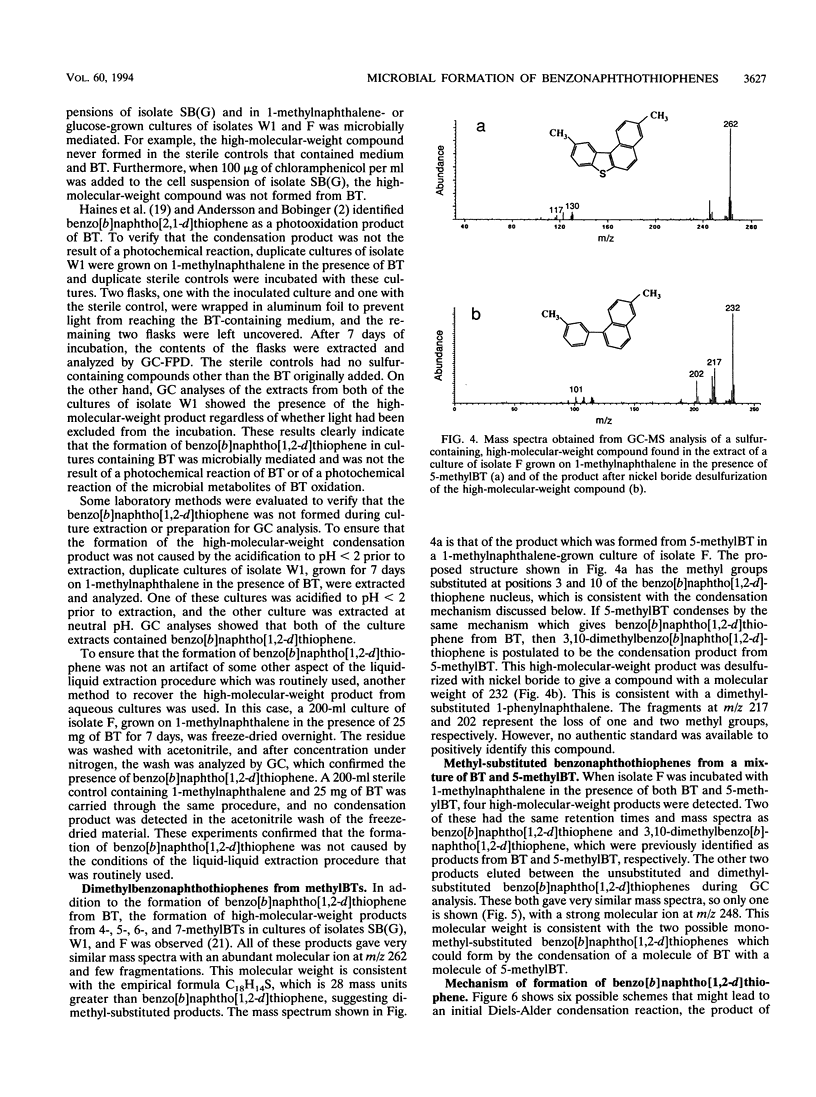

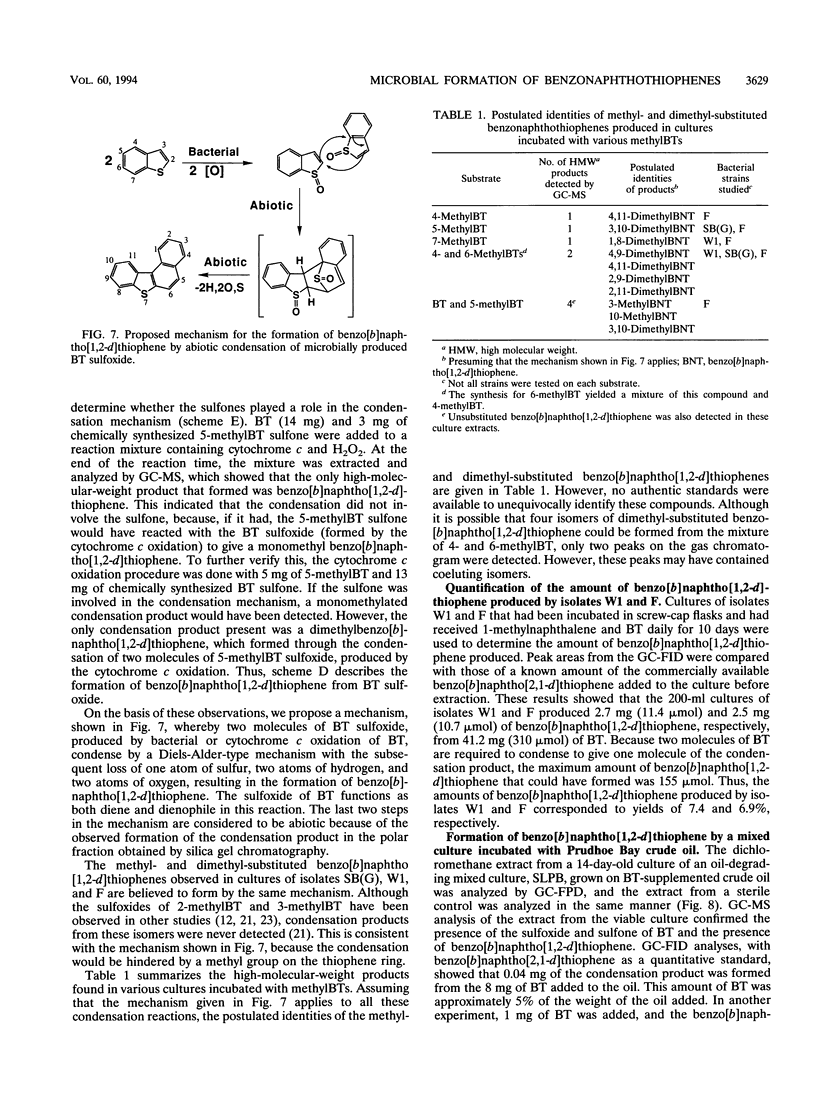
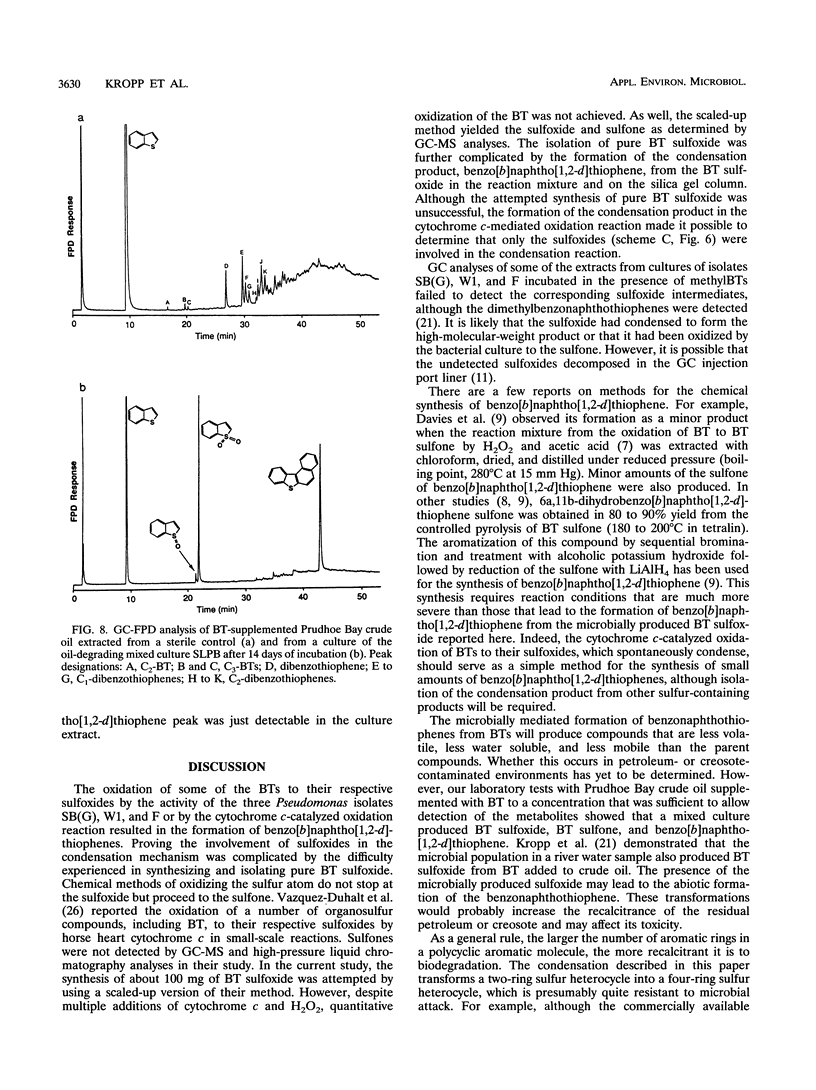
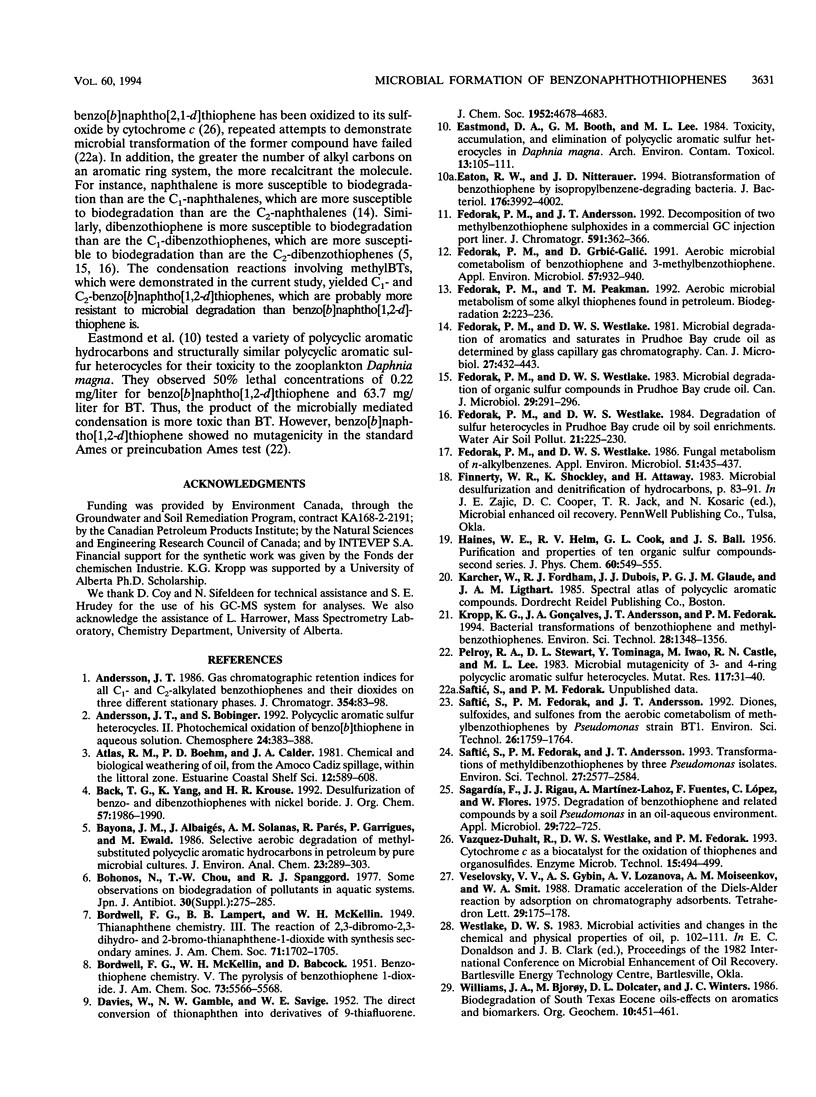
Selected References
These references are in PubMed. This may not be the complete list of references from this article.
- Bohonos N., Chou T. W., Spanggord R. J. Some observations on biodegradation of pollutants in aquatic systems. Jpn J Antibiot. 1977 Dec;30 (Suppl):275–285. [PubMed] [Google Scholar]
- Eaton R. W., Nitterauer J. D. Biotransformation of benzothiophene by isopropylbenzene-degrading bacteria. J Bacteriol. 1994 Jul;176(13):3992–4002. doi: 10.1128/jb.176.13.3992-4002.1994. [DOI] [PMC free article] [PubMed] [Google Scholar]
- Fedorak P. M., Grbić-Galić D. Aerobic microbial cometabolism of benzothiophene and 3-methylbenzothiophene. Appl Environ Microbiol. 1991 Apr;57(4):932–940. doi: 10.1128/aem.57.4.932-940.1991. [DOI] [PMC free article] [PubMed] [Google Scholar]
- Fedorak P. M., Westlake D. W. Fungal Metabolism of n-Alkylbenzenes. Appl Environ Microbiol. 1986 Feb;51(2):435–437. doi: 10.1128/aem.51.2.435-437.1986. [DOI] [PMC free article] [PubMed] [Google Scholar]
- Fedorak P. M., Westlake D. W. Microbial degradation of aromatics and saturates in Prudhoe Bay crude oil as determined by glass capillary gas chromatography. Can J Microbiol. 1981 Apr;27(4):432–443. doi: 10.1139/m81-066. [DOI] [PubMed] [Google Scholar]
- Pelroy R. A., Stewart D. L., Tominaga Y., Iwao M., Castle R. N., Lee M. L. Microbial mutagenicity of 3- and 4-ring polycyclic aromatic sulfur heterocycles. Mutat Res. 1983 Apr;117(1-2):31–40. doi: 10.1016/0165-1218(83)90150-7. [DOI] [PubMed] [Google Scholar]
- Sagardía F., Rigau J. J., Martínez-Lahoz A., Fuentes F., López C., Flores W. Degradation of benzothiophene and related compounds by a soil Pseudomonas in an oil-aqueous environment. Appl Microbiol. 1975 Jun;29(6):722–725. doi: 10.1128/am.29.6.722-725.1975. [DOI] [PMC free article] [PubMed] [Google Scholar]


